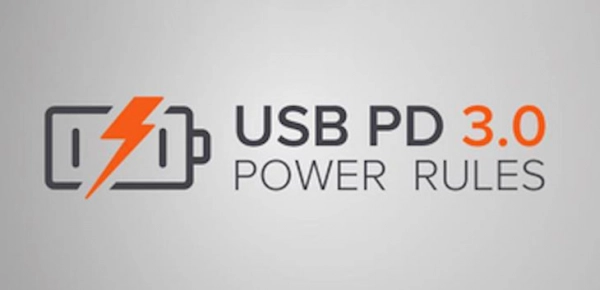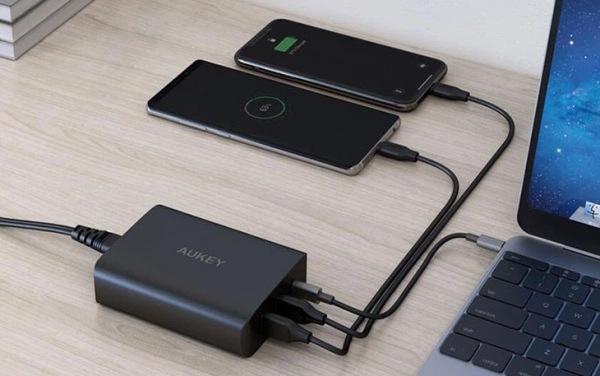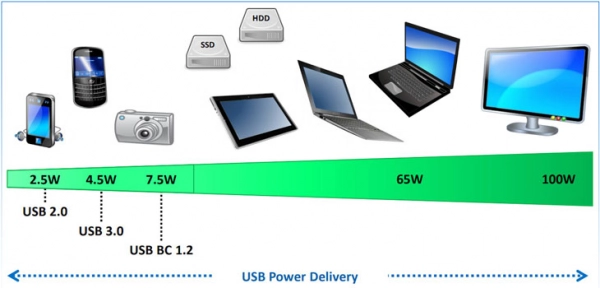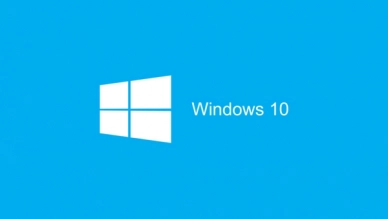Everything You Need to Know About USB Power Delivery: Fast, Convenient Charging for All Devices
Invented in the mid-1990s, USB (Universal Serial Bus) became the universal standard for connecting devices, charging, and data exchange. Over the years, it has evolved with versions such as 2.0, 3.0, Micro-USB, and Type-C.
Today, many devices use the USB protocol for charging, including smartphones, tablets, and computers. However, a significant issue has emerged: some devices or charging cables are incompatible with each other due to different types of ports. Moreover, different USB types have varying data transfer speeds: Type-C is faster than USB 3.0, and USB 3.0 is faster than USB 2.0. This incompatibility has led to an increase in electronic waste, as people frequently purchase new cables or devices when USB technology is updated. This challenge has driven the development of Power Delivery, a universal charging standard for all devices: phones, tablets, laptops, and more.
What is USB Power Delivery?
Compatibility issues are becoming a thing of the past with the introduction of the USB Power Delivery specification. USB Power Delivery (or PD for short) is a single charging standard that can be used across all USB devices. Typically, each USB-charged device would have its own adapter, but that will soon change. A universal USB PD will be able to power various types of devices.

Three Amazing Features of USB Power Delivery
The most appealing aspect of USB Power Delivery is its increased standard power level, now up to 100W. This allows your device to charge significantly faster than before.
Another fantastic feature of USB PD is its bi-directional power capability. Previously, if you plugged your phone into your computer, it would charge your phone. But with Power Delivery, your plugged-in phone can also power your computer’s hard drive.

Power Delivery also ensures that devices do not overcharge. During the charging process, both the charging device and the device being charged communicate by sending small data packets back and forth, ensuring the appropriate power supply (current and voltage) for safe charging.
While most small mobile devices, like phones, have not yet fully harnessed the power of Power Delivery, it brings significant benefits and convenience to users, particularly with power banks and laptops.
Power Delivery Power Levels
USB Power Delivery offers five charging configurations with different specifications (the maximum power for each configuration is 10W, 18W, 36W, 80W, and 100W). As we know, power depends on current and voltage. The PD configurations distribute different levels of current and voltage, resulting in varying charging powers, with a maximum of up to 100 Watts.
Typically, mobile devices require only 10 to 18 Watts, while laptops need around 80-90 Watts. For comparison, Qualcomm's Quick Charge supports up to 36 Watts, and VOOC supports 20 Watts. Note that to utilize higher power, you need a special USB cable called a Full Featured USB Cable, as standard cables usually only support up to 7.5 Watts.
The USB PD currently in use is the PD 3.0 standard. In this standard, PD introduces the concept of Power Rules, which are sets of rules that govern the distribution of voltage and current to devices. We have power thresholds, and Power Rules allocate voltage levels for each threshold.
- For power greater than 15W, PD 3.0 offers 5 and 9 Volts.
- For power greater than 27W, PD 3.0 offers 5, 9, and 15 Volts.
- Similarly, for power greater than 45W, PD 3.0 offers 5, 9, 15, and 20 Volts.

USB Power Delivery and USB Type-C
Many people may mistakenly think that PD and USB Type-C are the same since many Type-C devices support PD and vice versa. However, they are distinct concepts. Type-C is the name of the latest USB port with a symmetrical design, while PD is the name of a charging standard integrated into that port. However, to use USB PD, a USB Type-C port is required as it depends on the design of the contact pins.
In the past, when the world predominantly used USB 2.0, devices used 500 mA and 5V (milliAmpere and Volt) for power, equating to 2.5 Watts. Then, with USB 3.1, the current increased to about 900 mA. When we switched to USB Type-C, manufacturers configured this port to deliver up to 1.5 or 3.0A to provide more power when connected to other Type-C devices. USB PD is an independent specification that can work on both USB 2.0 and 3.0 standards and can deliver up to 100 Watts.
To use USB PD, your device needs to be equipped by the manufacturer to support it. Similar to Qualcomm's Quick Charge or OPPO's VOOC, both the device and the charger must have this feature to function.
Power Delivery – The Standard Charger for the Future
In summary, this new USB charging standard has the potential to revolutionize the technology landscape as we know it. With Power Delivery, a wide range of devices can share and supply power to each other without any hassle. Power Delivery is simply the most convenient and sensible way to charge all your devices.
As our phones and devices consume more energy, USB Power Delivery is likely to become increasingly prevalent.
Submit feedback
Your email address will not be made public. Fields marked are required *
Search
Trend
-
What is Black Myth: Wukong? Detailed Guide on System Requirements and Gameplay
08-21-2024 . 1k view
-
The simplest and fastest way to log into the Chinese TikTok, Douyin.
01-10-2022 . 1k view
-
Blog sites that will accept AI generated content
07-26-2024 . 1k view
-
Call of Duty: Black Ops 6 - Intense, Mysterious, and Surprising Warfare
09-02-2024 . 1k view
-
The "End of Life" for Windows 10: A Massive E-Waste Threat and Sustainable Solutions
08-18-2024 . 946 view







0 feedback